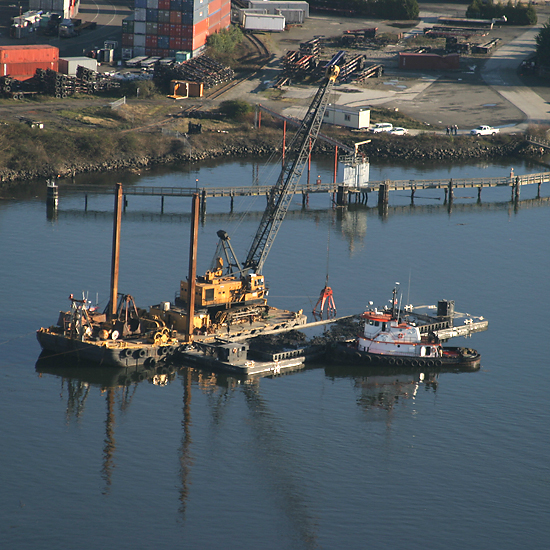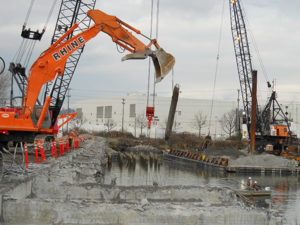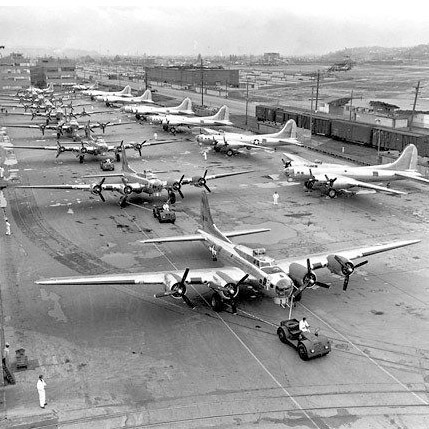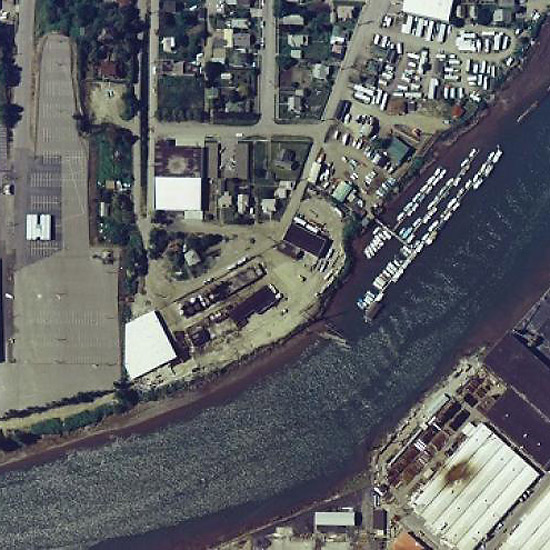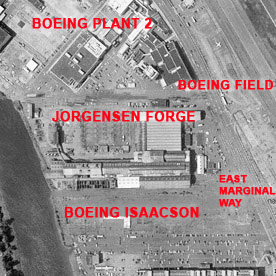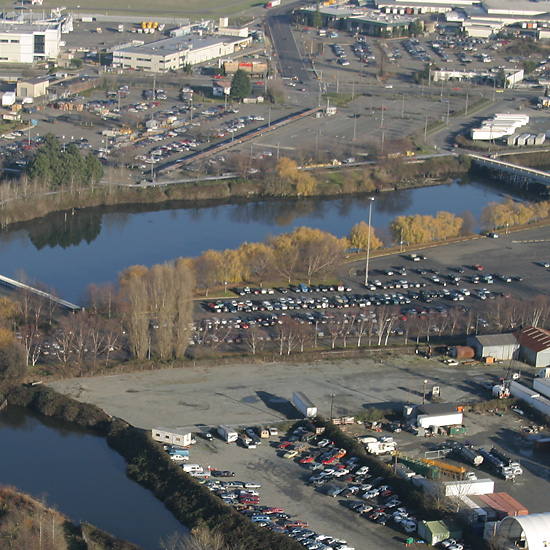What We’ve Accomplished: Completed Studies
LDWG has completed multiple studies to help us better understand the contamination and ways to clean it up:
- Remedial Investigation: LDWG worked with EPA and Ecology to conduct the remedial investigation study. This study describes site contamination and risks to people and the environment.
- Feasibility Study: LDWG worked with EPA and Ecology to conduct the feasibility study. This study describes the cleanup technologies and provides a range of alternatives for sediment cleanup.
- Activated Carbon (AC) Pilot Study: LDWG designed the AC Pilot Study to help EPA decide if adding activated carbon to the enhanced natural recovery cleanup technology would benefit the cleanup.
- Baseline Monitoring Studies: Results from the baseline monitoring studies will be compared to future monitoring to evaluate the overall performance of the final cleanup over time.
In 2001, LDWG started the Remedial Investigation to determine the extent of contamination and risks for people and wildlife. The Remedial Investigation was finalized in 2010 and LDWG used that information to begin preparing a feasibility study that examined different methods and alternative plans to clean up the contamination and reduce risk.
The draft Feasibility Study was completed in 2009 and reviewed by the tribes and interested stakeholders. The final Feasibility Study was approved by the Environmental Protection Agency and the Washington State Department of Ecology in 2012. The proposed plan was issued by EPA in 2013 and members of the public, agencies, businesses and tribes submitted more than 1,300 comments during the public comment period. With the input received, EPA issued a Record of Decision in 2014.
Pre-design Studies
The baseline monitoring and reporting is complete. The data collected in 2017 and 2018 reflect conditions following the Early Action Area sediment cleanups as well as years of upland source control and ongoing natural recovery. The baseline results will be used as a point of comparison to evaluate the overall performance of the final cleanup over the long-term.
The data collected and evaluated during the baseline phase are crucial for measuring the success of the larger sediment cleanup and source control efforts. Baseline monitoring involved collecting sediment, fish and shellfish tissue, and surface water data that will be used to establish post-Early Action cleanup conditions and serve as a baseline for future monitoring of the river-wide cleanup.
Pre-design studies also included:
- Collecting sediment and bank data to provide Ecology with additional information for source control actions
- Examining where ships, barges, and tugboats and other river activities might disturb the sediment at the bottom of the river
- Documenting structures such as piers and piling in the river that may affect the cleanup design
- Identifying strategies for the cleanup design
![]()
View the completed Pre-design Studies in our Project Library
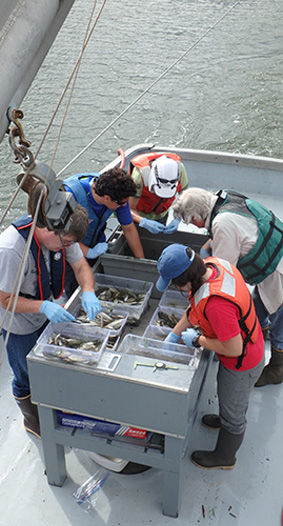
Fish and crab sampling
Activated Carbon Pilot Study
One technology that will be used in the cleanup is Enhanced Natural Recovery (ENR). ENR is used to speed up the recovery process that happens naturally as new sediment flows in from upstream. ENR involves placing a thin layer of clean sand on top of contaminated sediment to immediately lower contaminant concentrations to below harmful levels. LDWG designed a study to see if we can enhance that process even more.
We wanted to see if adding activated carbon, a common material used in household water filters, would make contamination in the sediment less bioavailable* to bottom-dwelling creatures. Activated carbon binds up contaminants like polychlorinated biphenyls (PCBs), a contaminant in the Lower Duwamish Waterway, making them less accessible to bottom dwellers. PCBs are toxic to aquatic life and persist in the environment for long periods of time. PCBs can accumulate in fish creating health hazards for people and wildlife that eat the fish.
*Bioavailability is the ability for contamination to enter the food chain.
We tested adding activated carbon to the enhanced natural recovery material in three different parts of the waterway. In late 2016 and early 2017 we placed activated carbon mixed with clean sand over contaminated sediments in designated plots. Next to these test plots, we had comparison test plots where we only placed the clean sand.
To read more about the study and results, see this EPA fact sheet: Summary of Study for Lower Duwamish Waterway: Enhanced Natural Recovery and Activated Carbon.
Scientists monitored the plots each year from 2018 to 2020 to answer these questions:
- How much activated carbon stays in place in different river conditions? With few exceptions, monitoring data shows that both the Enhanced Natural Recovery and Enhanced Natural Recovery + Activated Carbon materials generally stayed in place over the 3-year monitoring period.
- Did activated carbon increase the benefits of enhanced natural recovery material? Overall, the results indicate that both Enhanced Natural Recovery (sand only) and Enhanced Natural Recovery + Activated Carbon (sand with activated carbon mixed in) were successful in reducing the ability for PCBs to enter the food chain. This was true under a wide variety of conditions in the LDW over the monitoring period. Enhanced Natural Recovery reduced PCB bioavailability to the point that improvements gained by adding Activated Carbon were inconsequential.
- How activated carbon affects animals that live in the sediment? We found using both laboratory and field studies that the type and amount of activated carbon applied in this project is not harmful to aquatic animals that live in the sediment.
Conclusion
Based on this pilot study, EPA and Ecology have decided that while there is no harm, there is also no clear benefit in adding activated carbon to Enhanced Natural Recovery in the Lower Duwamish Waterway.
![]()
View the Activated Carbon Pilot Study
Design Report
Year 3 Report
EPA fact sheet: Summary of Study for Lower Duwamish Waterway: Enhanced Natural Recovery and Activated Carbon
What We’ve Accomplished: Early Action Cleanups
The Remedial Investigation also identified some of the most contaminated areas within the LDW where early cleanup could be started. LDWG completed five “early action” cleanups to reduce the risk of exposure to contaminated sediment and get a head start on the Lower Duwamish Superfund cleanup. These early action areas were some of the most contaminated sediment areas of the LDW with the greatest opportunities for reducing polychlorinated biphenyl (PCB) contamination in the sediment. In total, these early efforts cleaned up about 29 acres of sediment and reduced average surface sediment levels of PCB contamination by over one-half, a significant step forward in the cleanup of the Lower Duwamish.

